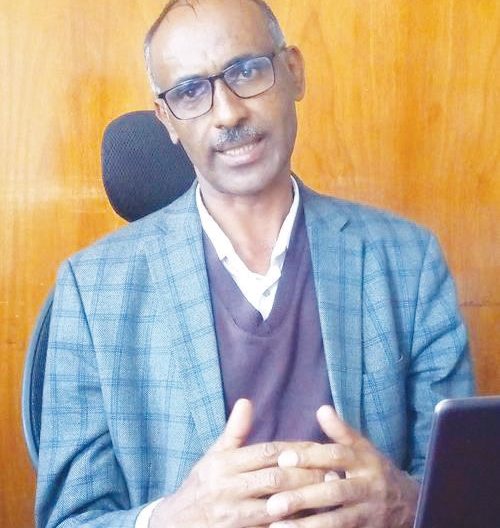
Livestock production plays a significant role in Ethiopia’s agricultural sector and economy. With a rich history of traditional livestock rearing practices, Ethiopia has emerged as one of the largest livestock-producing countries in Africa. The diverse geographical and climatic conditions of the country provide ample opportunities for raising various types of livestock, including cattle, sheep, goats, and camels. Livestock production not only contributes to the livelihoods of millions of Ethiopians but also plays a crucial role in meeting the country’s food security needs and driving economic growth.
The sector provides employment and income opportunities for a significant portion of the population, particularly in rural areas. It serves as a primary source of nutrition, as animal products such as meat, milk, and eggs are essential components of the Ethiopian diet. Additionally, livestock serves as a valuable asset for farmers, acting as a form of savings and insurance against economic shocks.
Despite its immense potential, the livestock sector in Ethiopia faces several challenges. Limited access to improved technologies, veterinary services, and market infrastructure hampers productivity and profitability. Disease outbreaks, such as Rift Valley fever and foot-and-mouth disease, pose a significant risk to livestock health. Climate change and recurrent droughts further exacerbate the vulnerability of livestock farmers, affecting animal productivity and food security.
Ethiopia, with its abundant animal resources, has the potential to become a global leader in the agricultural sector. However, the country is facing significant challenges in fully harnessing the benefits of its animal industry. According to Fekede Faisa (PhD), Director of Animal Research at the Ethiopian Agricultural Research Institute, one of the main issues hindering the sector is the rampant informal trade of animals, resulting in a significant loss of potential revenue.
He stated that Ethiopia possesses animal resources that surpass those of neighboring countries such as Somaliland, Djibouti, Kenya, and Sudan. However, due to the lack of proper control mechanisms and infrastructure, animals are leaving the country illegally in various directions. This not only hampers the country’s economic growth but also undermines its ability to supply animal products to the international market.
Despite having an estimated 70 million cattle, Ethiopia is not fully capitalizing on its potential. In the past, the country earned up to half a million dollars in foreign exchange through animal product exports. However, this figure has radically declined to a mere one hundred million dollars due to the lack of control at the borders of illegal activities, he noted.
He emphasized the need for research to identify the reasons behind this phenomenon and suggested that adjusting the marketing chain, facilitating alternative markets, and developing slaughterhouses could provide viable solutions.
In contrast to other countries where animal husbandry is primarily focused on meat and milk production, Ethiopian farmers predominantly raise animals for agricultural purposes. With over 95 percent of the country’s agriculture relying on animal labor, the emphasis on agricultural productivity has hindered the development of the meat and dairy sectors, he said.
He mentioned enhancing the productivity of a smaller number of animals by providing tractors and combine harvesters to the agricultural sector. This would enable farmers to meet their agricultural needs while simultaneously increasing the availability of milk and meat for consumption and export.
Highlighting the concentration of livestock in the highlands and valleys, where combined agriculture is practiced, Fekede revealed that animals contribute significantly to the agricultural GDP. In fact, a study demonstrated that animals account for 47 percent of the agricultural GDP. This underscores the importance of the animal sector in driving economic growth and the urgent need to transform Ethiopia’s animal resources into a valuable community asset.
Meeting the nutritional needs of the population is another pressing concern. According to the World Health Organization (WHO), individuals require regular consumption of milk, meat, and eggs for a healthy life. However, Ethiopia currently falls short of producing the required 23 billion liters of milk per year to achieve the recommended 200 liters per capita.
He mentioned that increasing the number of dairy cows with improved breeds capable of producing more than 15 liters of milk per day could bridge this gap.
Unfortunately, the number of cows with improved breeds in Ethiopia is limited to around one million, primarily concentrated in urban areas. The lack of motivation to improve breeds stems from farmers’ focus on agricultural activities rather than milk production.
Fekede emphasized the need for accessible centers providing improved animal breeds, particularly in the dairy cattle sector. By increasing the availability of cows capable of producing higher quantities of milk, Ethiopia could achieve self-sufficiency in milk production.
Insufficient feed availability is another obstacle to optimizing animal productivity. Due to the scarcity of fodder and other factors, dairy cows in certain districts produce an average of only 1.5 liters of milk per day. He stressed the benefits of breeding cows identified for their milk production to address this issue effectively. Additionally, the involvement of investors in milk production and the establishment of modern slaughterhouses would further enhance the sector’s performance.
To address these challenges, he called for greater investment and a conducive environment for both government and private sector participation. The establishment of a well-organized animal development sector and the allocation of resources to overcome bottlenecks within the industry are vital steps. The director highlighted the need for centralized efforts to streamline animal marketing, breeding, and other related activities, currently scattered across various ministries.
There is no investor involved in milk production. However, despite the large number of milk processing plants, they are not getting enough quality milk, so they are operating below their capacity. He pointed out that the investor should also participate in the animal husbandry.
He said that the animal development sector was recently organized at the ministerial level, but it was destroyed again in two or three years without being given any time. By paying attention to the sector’s investment, market linkages, structural organization, and others, the huge wealth in the sector can be used properly.
At present, Yelemat Tirufat initiative has been designed and is off to a good start in beef and dairy cattle. The director mentioned that animal marketing, breeding, and other activities are scattered among different ministries. He pointed out that better results can be achieved if the government can solve the bottlenecks in the sector, starting with resource allocation.
Moreover, the sector, particularly chicken production, requires attention. Existing government-controlled centers dedicated to chicken rearing face numerous challenges, leading to suboptimal outcomes. Local chickens, for instance, lay a mere 60 eggs per year, while research suggests they have the potential to lay up to 260 eggs. He recommended a focus on improving the productivity of local chicken breeds to meet the growing demand for poultry products.
Furthermore, by investing in production, improving animal breeds, and creating a favorable environment for investors, Ethiopia can unlock its agricultural potential, meet domestic consumption needs, and become a major player in the global market. It is imperative that stakeholders, both in the public and private sectors, collaborate to drive the necessary changes and maximize the country’s animal resources. Only through concerted efforts can Ethiopia fully capitalize on its agricultural potential and achieve sustainable economic growth.
Besides, the government should collaborate with all concerned parties to enhance the livestock sector, and it has implemented various strategies and policies to address these challenges and harness its potential. Efforts are being made to improve animal health services, promote selective breeding programs, enhance feed availability and quality, and develop market linkages. The government is also investing in research and development, capacity building, and public-private partnerships to foster sustainable and inclusive growth in the livestock sector.
Moreover, with the right support and investments, Ethiopia’s livestock sector has the potential to contribute significantly to poverty reduction, economic development, and the well-
FIKADU BELAY
THE ETHIOPIAN HERALD TUESDAY 7 MAY 2024





